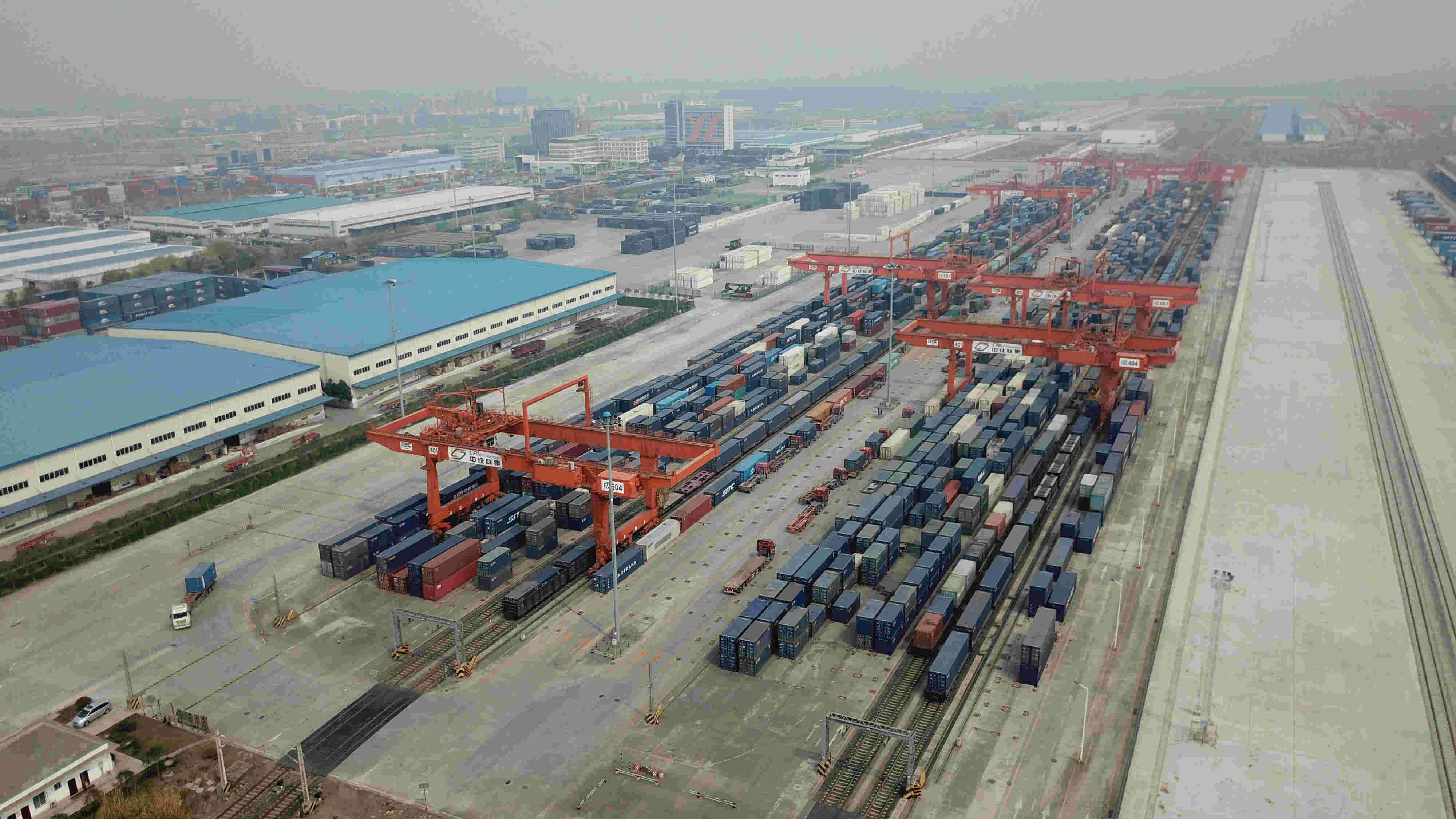
Tech & Sci
21:37, 17-Mar-2018
China’s new Silk Road: Building transportation links in bid to reshape global trade
By Tao Yuan

Chen Chang looks up as the gantry crane descends, blocking the sun and creating a dreamy light-to-shadow gradient on his face.
“It’s so beautiful,” he said, container boxes of goods around him waiting to depart on train tracks to reach cities as far as Lodz, Poland.

Cheng Chang, ground supervisor at China United Int’l Rail Containers Chengdu /CGTN photo
Cheng Chang, ground supervisor at China United Int’l Rail Containers Chengdu /CGTN photo
When Chen joined the rail ten years ago, his career plan didn’t involve becoming part of a national strategy. “It was merely a job,” he said, as a cacophony of sirens ringing and trucks whizzing by dim his voice. Now this container port in southwest China’s Chengdu city is one stop in a massive network of Trans Eurasia railways, linking over 30 Chinese cities to their respective destinations in Europe.
China is rebuilding the Silk Road with land and sea routes, gas pipelines and economic corridors that circle around the globe, with the ambition to reshape global trade.
The Belt and Road Initiative, it’s called. President Xi Jinping calls it the project of the century. He’s seizing his chance to engage the world, as US President Donald Trump goes strong with his “America First” policy.
“When I tell people I send off trains to Europe, I feel proud,” said Chen. He’s a foot soldier in a trade powerhouse.

Ten to 12 trains depart from Chengdu’s container port for the Polish city Lodz every week. /CGTN photo
Ten to 12 trains depart from Chengdu’s container port for the Polish city Lodz every week. /CGTN photo
A source of pride – certainly, as Trans Eurasia freight rail services like the ones connecting Chengdu and Lodz catch eyeballs and make headlines. However, so far, they are failing to capture trade. According to a new report from the Center for Strategic and International Studies in Washington, rail carried just under one percent of the trade between China and Europe by volume and just over two percent by value in 2016.
But the report pointed out the share could double in the next decade, as rail services are twice as fast as sea and cost half as air, offering a compelling middle ground.
Another challenge, or opportunity in disguise is China’s trade surplus with Europe. Most trains now run half-empty back to China from Europe.
Hatrans, the Polish logistics company and first Polish operator of the Chengdu-Lodz train, soon saw a business opportunity, using the return journey to transport food and beverage products, which are in high demand in China as the country’s middle and upper class get increasingly choosy about their food.

Natalia Kosana Goldysiak now feels at home in Chengdu. /CGTN photo
Natalia Kosana Goldysiak now feels at home in Chengdu. /CGTN photo
“If the product has a short validity period, say six months, and if two of that six months is spent on transport, then it really doesn’t have a chance to enter the Chinese market,” said Natalia Kosana Goldysiak, operations manager of Polish Showroom, a subsidiary of Hatrans.
Goldysiak said cooperation between China and Poland is going far beyond just trade.
“The Polish presence in China is growing. And vice versa.”
The ancient Silk Road carried more than physical goods and the new one is also carrying friendship and goodwill.
Goldysiak certainly feels at home in Chengdu now, and hopes more Europeans will too.

SITEMAP
Copyright © 2018 CGTN. Beijing ICP prepared NO.16065310-3
Copyright © 2018 CGTN. Beijing ICP prepared NO.16065310-3